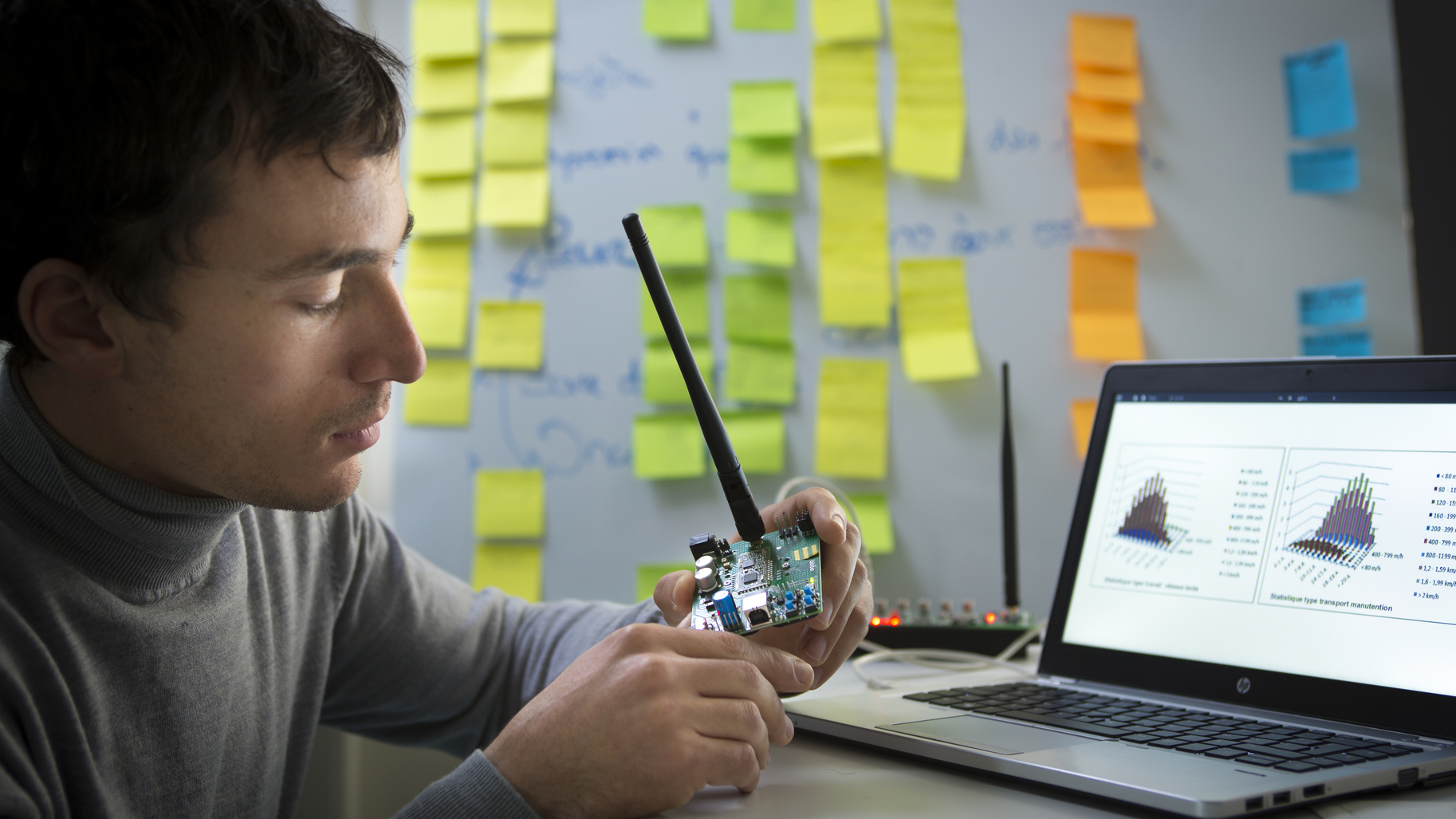Agriculture : making life easier for agricultural workers
Date:
Changed on 16/07/2020

Planting, weeding, picking and transportation are the four main areas in which the Toutilo cobot aims to make life easier for agricultural workers. Created by the start-up Toutiterre, which was set up in 2014 and which has been working with Inria since 2015, this vehicle moves at a controlled speed above crop rows, offering a range of features. Workers can either sit or lie on it in an ergonomic position in order to reach crops while the cobot advances autonomously.
Indeed, this is the real advantage of Toutilo: Toutiterre and Inria worked together to equip it with GPS guidance, in addition to optical guidance technology. An optical camera mounted on the vehicle guides it in relation to a point of reference, such as a guiding line or the crops themselves. Users don’t have to steer the vehicle, leaving them free to concentrate on their task. The cobot is also equipped with tools for mechanically working the soil, in addition to a central crate rack capable of holding up to 12 trays of vegetables, preventing workers from having to carry them.
Inria’s scientists are still working on ways to improve the machine’s interactivity and autonomy, including through the gathering and reproduction of spatial and temporal data in order to better support agricultural workers. More than 70 Toutilos have already been sold worldwide...and this is only just the beginning!
Two types of expertise came together in 2018 to form the start-up Dilepix. On one hand, there was the ViSP (Visual Servoing Platform), created by the Inria Rennes project team Rainbow, which is capable of analysing images and moving robots in accordance with what is seen. On the other hand was the neural networks in Dilepix’s artificial intelligence. By bringing these two facets together, the start-up is aiming to identify situations of agronomic interest on farms.
But what does this actually involve? Cameras placed in fields, on agricultural machinery or on top of livestock buildings enable the AI to recognise abnormal situations, whether negative, such as the arrival of insect pests or weeds, or an animal limping; or positive, such as the appearance of grains or flowers. As a result, by detecting situations requiring action in real-time, there is no need to carry out prevention on whole plots or herds of animals. The AI helps save time and cuts down on consumption of products, making agriculture more profitable and more sustainable. The service will be offered to agricultural cooperatives and machinists, who will then be able to distribute it among their clients. In the event of an alert, these first groups will be responsible for deciding whether or not to notify the farmer. Dilepix is currently training its neural network to recognise situations of interest. It is expected to be on the market in 2021.
All of our innovations in cobotics follow the same logic: they are designed to be as easy to use as possible. There’s not much point developing technology if you don't first think about how it will be used.
Flore Lacrouts-Cazenave, CEO of Toutiterre, about Toutilo, l'enjambeur de cultures